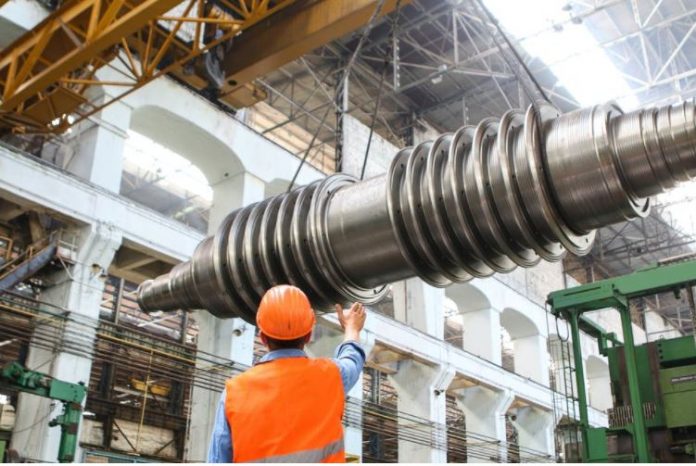Manufacturing is an interesting topic to discuss and to explore at depth. This is because while the age-old impression we have of a factory line being attended to in a strict row lingers in our minds (and is still more than relevant in some areas of the earth), such a simplistic vision limits our ability to think about this process creatively, and from an innovative perspective.
Furthermore, even relatively untouched consumers are starting to learn more about manufacturing and its logistical difficulties now that Covid-19 has swept up and delayed many just-in-time manufacturing processes from going ahead. There’s a direct silicon shortage right now, for instance, which means that the prices of tech components, like hard drives, graphics cards and CPU’s, are starting to skyrocket. Add a healthy dose of demand from the cryptocurrency market that’s always evolving, and you can begin to see the inherent issues taking place.
How is it, then, that you can begin to improve the effectiveness of your manufacturing line? Let’s begin to consider that, below:
Excellent 3D Printing
3D printing seems to be the way of the future, with its absolute efficiency, rapidity, and detailed production turning heads industry-wide. For instance, even companies like RapidPSI https://www.rapidpsi.com/aerospace/ are printing aerospace parts used to an exacting standard by other manufacturers and educational entities in that space. It’s hard to think of a more refined and exacting industry than that, with, if you forgive the pun, sky-high standards at every level.
3D printing not only provides manufacturing processes with an easier and quicker turnaround but can totally reduce and remove the potential for acceptable errors or misfires in manufacturing. As such, you can expect 3D printing to become the norm, and to permeate almost all aspects of the modern manufacturing process. In that respect, it’s hard not to look to the future with some kind of optimism.
Lateral Manufacturing Priorities
Covid-19 saw heavy impacts on the manufacturing industries, and this was perhaps best illustrated by how certain firms, like Johnson & Johnson, switched to producing, in some part, PPE for ailing hospital workers. This lateral manufacturing priority, with public tenders and government contracts that could be bid on, slowly started to show that manufacturing capacities in themselves were always necessary and not isolated in terms of their specialist reproduction requirements.
In this respect, automation can often be tailored to enhancing a range of other goals, and that has inspired firms to offer more of a diverse catalog of products, shoring up their manufacturing work by aiding other services, public initiatives, and more. While it’s not always a perfect fit, this speaks volumes about the future utility of manufacturing possibility, particularly when 3D printing, as explained above, becomes more and more the norm.
Enhanced Automation
Of course, automation is nothing new, and is perhaps one of the most well-known changes in manufacturing as of late. The implications of such a change, however, are hard to predict. As companies become more profitable and automated machines become even more diverse in their practical skillsets and applications, it’s hard to see what impact this will have on the workforce.
From large-scale jobs becoming somewhat redundant, to the maintenance and repair of automated entities perhaps opening a wider skill category, enhanced automation is sure to make waves and continue to do so for years to come. In terms of how this can affect your own manufacturing process, it may mean that working hours expand and effectively help you produce even after the usual labor closing hours of your business.
It also means that flaws can be more easily detected and discarding, as well as improving the necessary safety of manufacturing logistics. As you can see, there are many ancillary benefits that come with this. However, it’s also important to remember that automation and its application isn’t cheap. It requires investment, long-term planning, and the willingness to shift your production capacities as necessary. For any firm this can be somewhat unsettling, and so we can expect the slow application of this new norm to take some time to prove itself and prosper, and this will be true of every new automation application that becomes suitable.
The Internet Of Things (IoT)
The internet of things is allowing for further automation and also remote monitoring of processes. This means that manufacturing is not only becoming quicker, easier, cleaner and more productive, but its moderation requirements are becoming easier to handle.
From having direct control over automated parts to managing statistics, moderating temperatures, ensuring regular self-cleaning of certain segments of your manufacturing process, and more, the internet of things is permeating every level and aspect of our approach. This is perhaps seen in our own homes in the form of smart products that communicate with one another, but you can expect this to become more of the norm this decade in manufacturing outfits all across the world. This can help prevent unnecessary wastage and heightened safety standards as a valued and welcome side consequence.
Furthermore, smart factories, as they have come to be known, will be flexible, making use of programs like artificial intelligence automation, augmented and virtual realities, and more. For instance, Speedfactory is a great example, as they have used these production capacities and renewed cycles to cut down shoe manufacturing to less than a week. As you can see, as time is the biggest consideration when it comes to manufactured planning, companies far and wide will throw their entire weight behind initiatives like this.
Tackling The Skill Gap
Despite the technological innovation being focused on in the manufacturing space, it’s also true to say that automation is having an impact on the workforce. While entry-level jobs are slowly and gradually becoming less and less in demand, highly skilled positions are needing more people than ever. This means that an expected 2 million manufacturing jobs are unfortunately going to go unfulfilled in the next ten years within the United States. Closing the skill gap will involve encouraging STEM fields with fast-tracked career outreach programs, as well as businesses investing in their current employees to prevent mass layoffs and ensure that they have the people well-versed in their process enough to fill out these shortages.
Furthermore, the drives to push the future of women in highly skilled technical manufacturing positions is expanding and increasing, with many companies now offering their own programs and hiring from relevant schemes straight out of universities. This drive is aimed to make the workforce a little more equal without forcing demographics to comply with artificial quotas. Every business has its own approach though, of course.
Simulated Plans
Simulated physics and digitized representations of the real world are becoming more and more refined, to the point where proof-of-concept and prototypes built entirely within these engines are becoming more and more feasible to consider. Perhaps the golden example of this (and an example that can take your breath away) involves Jaguar’s Vision SV concept car unveiled entirely within the new Gran Turismo video game on Playstation.
They have curated a 3D model of such a car since, but the fact that it was designed, unveiled, and expressed in this engine is a sight to behold. We can expect manufacturing approaches to be influenced by initiatives like this, often for the better, and certainly in a manner that turns heads.
With this insight, we hope to look to the future and see how technology continues to be shaped by innovative forces, including what impact that has on industries as vital and expanding as manufacturing. It’s an exciting time to witness, that’s for certain.



